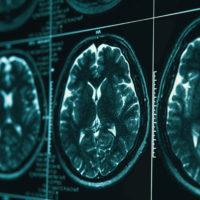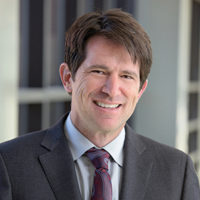Nearly 10 million elderly Americans suffer from a common condition called essential tremor, which causes involuntary shaking in arm, hands and sometimes the head. Of those who seek treatment, most will be given medication which is ineffective in more than half of all cases. For those patients, deep brain stimulation (DBS) is a safe, effective alternative yet most people don’t know about it.
“The reality is that many people simply don’t know about DBS for essential tremor because their physician is not aware of the surgery,” says David VanSickle, MD, PhD, FAANS, a fellowship-trained Denver neurosurgeon with Neurosurgery One and the medical director of the Denver DBS Center.
The Food and Drug Administration (FDA) approved the use of DBS to treat essential tremor in 1997. Research shows that DBS can effectively suppress essential tremor for more than six years after implantation.
In recent years, the benefit-risk equation of having this surgery has improved significantly due to several DBS advancements, Dr. VanSickle says. Those include:
- Asleep DBS: This surgery is now routinely performed while the patient is asleep vs. the previous method when the patient had to be awake to ensure proper placement of the electrodes.
- Lower infection rates: The Denver DBS Center’s infection rate is less than 0.3%, compared to a typical infection rate of roughly 3-3.5% throughout the nation.
- Greater accuracy: Due to our use of advanced technology and intraoperative imaging to confirm location of target, the Denver DBS Center has reduced the rate of revisions to 1%, compared to 15% nationally.
- Remote programming: After surgery, the DBS system must be programmed to the individual patient. This programming typically required an in-person visit to the patient’s neurologist. However, a new DBS system used by the Denver DBS Center allows remote programming through a telehealth visit, giving access to this technology to patients who cannot leave home or live in remote areas.
“DBS has really changed. With the complication rates much lower than before, many patients are choosing to go ahead with surgery to treat their essential tremor when they never would have considered it in the past,” Dr. VanSickle says.
Essential tremor is one of the most common movement disorders, affecting nearly 10 million Americans. Known as involuntary shaking typically of the hands and arms, essential tremor is eight times more common than Parkinson’s disease. While medication is often the first line of treatment for essential tremor, there are no specific essential tremor medications available. The most commonly prescribed medications are beta-blockers and an epilepsy drug called primidone.
Essential tremor patients often receive treatment from their primary care physicians (PCP) who may not be familiar with DBS. While medications are always the first line of treatment, they don’t work in up to 60% of patients.
Seeing tremors as a “normal part of aging” and thinking nothing more can be done, many patients are reluctant to seek additional medical care. Lack of adequate treatment often leads to social isolation, which then can lead to depression and worsened overall health. Research has found:
- More than 50% of people with essential tremor are embarrassed to be out in public
- More than 60% of people with essential tremor had mild anxiety and more than 50% had mild depression
- People with essential tremor who had five or more depressive symptoms were more likely to experience cognitive decline.
“The value proposition is simply way better than it was 5 years ago,” Dr. VanSickle says. “Now, there’s really no reason to have to live with a severe, disability tremor when, with a fairly low risk, you can have DBS surgery and eliminate the tremor or at least eliminate most of it.”
David VanSickle, MD, PhD, FAANS, is a board-certified Denver-based neurosurgeon and medical director of the Denver DBS Center, which is part of the Neurosurgery One Littleton clinic. He has performed more than 1,000 deep brain stimulation surgeries for patients in the U.S. and abroad. With a PhD in bioengineering, Dr. VanSickle is committed to advancing DBS and helped revolutionize the field with robotic-guided DBS surgery performed while the patient is asleep. Dr. VanSickle lectures widely, trains other neurosurgeons in Asleep DBS, and is an expert in the appropriate use of DBS to help patients with Parkinson’s, Essential Tremor, Dystonia and other movement disorders control their symptoms and gain years of active, fulfilling life. He can be reached at 720-638-7500
Read More About Deep Brain Stimulation





